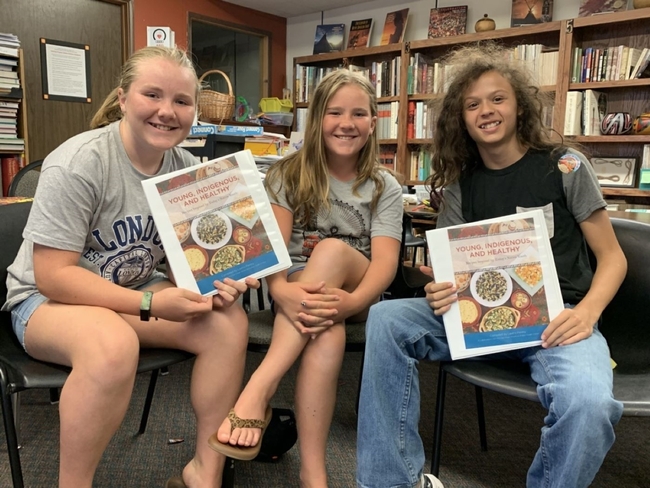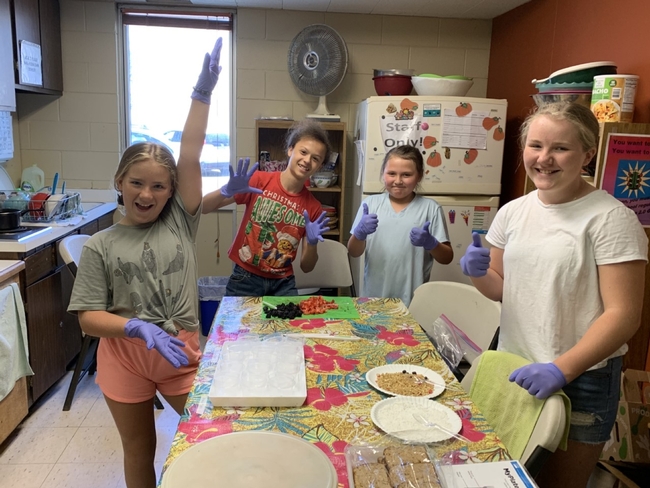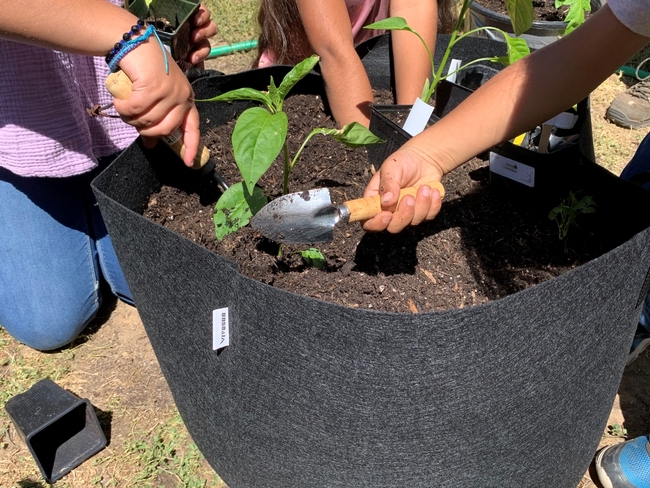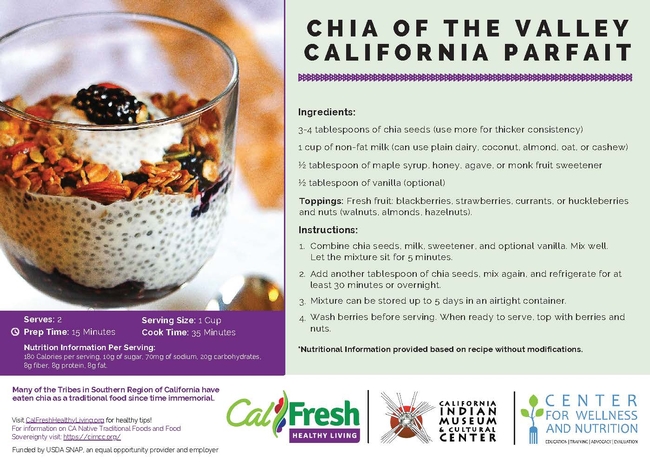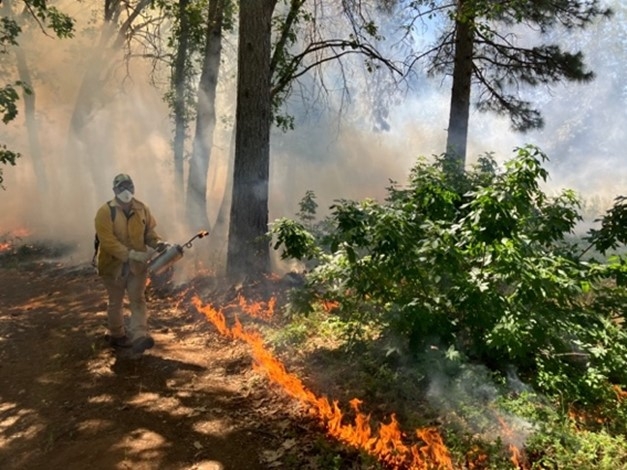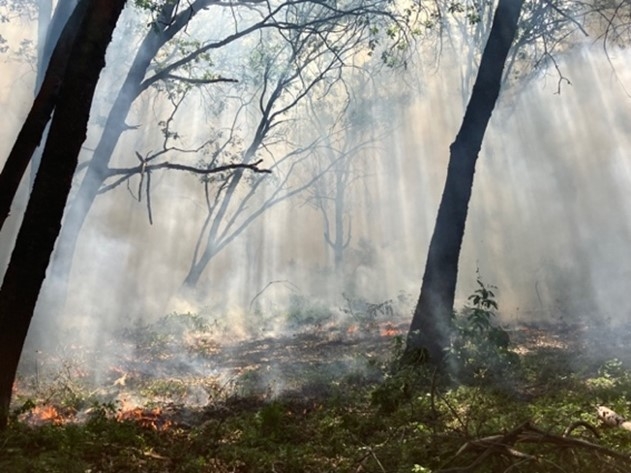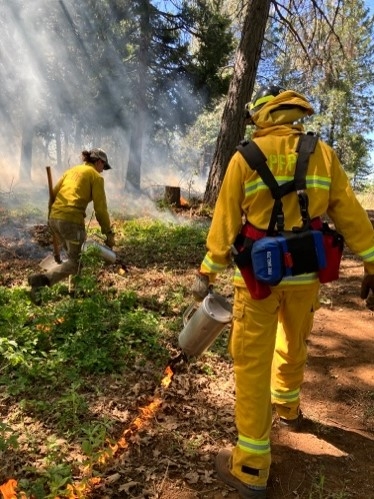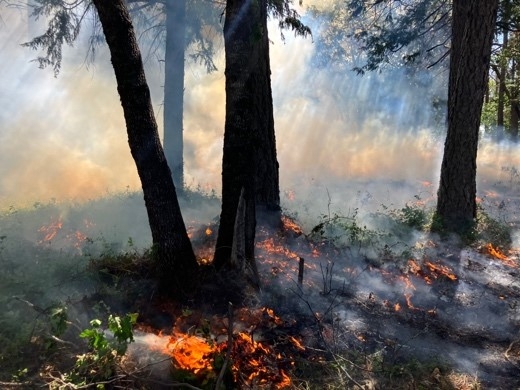Posts Tagged: El Dorado
CalFresh Healthy Living, UC helps connect Native youth with Native foods
Program with Foothill Indian Education Alliance teaches healthy eating to young people of many tribes
More than a tutoring center, the Foothill Indian Education Alliance facility in Placerville also provides cultural activities for youth in El Dorado and Amador counties affiliated with a broad diversity of Native American tribes.
In addition to traditional crafts like drum- and jewelry-making, the center began offering a food component last summer, through a partnership with CalFresh Healthy Living, University of California – one of the agencies in the state that teaches nutrition to people eligible for SNAP (Supplemental Nutrition Assistance Program).
“A lot of the kids, because they don't live on a reservation or their family might not be connected to a local tribe, don't know a lot of their history or their foods,” said Cailin McLaughlin, nutrition educator for CalFresh Healthy Living, UC, based at the UC Cooperative Extension office in El Dorado County. “Food is a good way to explore any heritage because food is at the central point of a lot of cultures and customs – sharing meals and sharing stories behind it.”
Last spring, McLaughlin worked with Hal Sherry, the head tutor at Foothill Indian Education Alliance, to create a new, five-week “summer camp” during which youth would learn about and prepare Native foods in the center's kitchen, primarily with ingredients from its backyard garden.
Sherry said that the experience provided the participants – 10 elementary school students and seven middle or high school students – an important perspective on the interconnectedness of all living things.
“Part of the objective of the program is for them to understand that each one of us is part of the natural order of things, and that we have to do our part to fit into that cycle,” he explained. “There's kind of an ecological lesson that's also being learned…and we don't want to put poisons in our bodies, and we don't want to put poisons in our environment.”
Program combines cultural lessons, nutrition information
For the summer program, McLaughlin selected a curriculum centered on garden-based nutrition, and infused it with elements of Indigenous food ways.
“We predominantly picked ingredients that had cultural significance to Native American communities, so things like blueberries, blackberries, pine nuts, squash, things of that nature,” she said. “So we could feed into the history of that ingredient, why it's important to the Indigenous communities – and then give (the students) the nutritional information about it.”
After the youth prepared chia seed parfaits – from a recipe that is part of a series developed by CalFresh Healthy Living, the California Indian Museum and Cultural Center, and the Center for Wellness and Nutrition – a Foothill Indian Education Alliance staff member shared that Native hunters would eat chia seeds for strength before a long hunt.
Many of the participants had never had chia seeds before, and the parfaits were an “absolute favorite,” in the words of McLaughlin.
“I wish we could have made them more often!” said Lacey, a fifth grader who participates in the center's programs year-round.
In addition to working outside in the garden, Lacey said she also liked cooking in the kitchen during the summer camp – and the fact that the young people could take the lead.
“It was all the kids doing it, but (McLaughlin) was just supervising and making sure we were doing it right – it was really nice,” said Lacey, who identifies as Miwok.
Sharing within families, across tribes
Active participation by the young people is one of the strengths of the program, according to Sherry. He expressed admiration for McLaughlin's engaging teaching style, which eschews “lectures” and instead draws the participants into lively conversations about the nutritional content of the ingredients.
“Hopefully they're going to retain some of that knowledge and information and then remember: ‘You know what, yes, I think I would like to have some corn and some beans tonight, because that's going to help my bones grow strong and my eyesight get better,'” Sherry said. “That's really a big part of what we want them to come away with.”
At the end of the summer program, participants also came away with a binder of recipes from a cookbook of Native American dishes, “Young, Indigenous and Healthy: Recipes Inspired by Today's Native Youth.” James Marquez, director of the Foothill Indian Education Alliance, said he heard from students that they were bringing many of the lessons from the program back to their homes.
“I've heard the same kind of thing from parents and grandparents, who have said how wonderful that was and that kids come back home and have an interest in cooking and trying to serve nutritious meals to their families,” Marquez said.
That crucial sharing of knowledge also happens between and among staff members and students, as the center comprises members of many tribes, from South Dakota Lakota to Navajo.
“We serve Native people, we don't care what tribe they come from – they're all welcome,” Marquez said. “What we do represents a lot of different tribes, so we share information from one tribe to another, and that way people can appreciate everybody and what we have to bring to the table.”
Talia, a sixth grader who participated in the summer program, said that she enjoys that cultural sharing.
“I like how I can learn new things…and how I learn more about the people around me,” she explained. “It's also fun to learn about other people's cultures, and what Native American they are, too.”
McLaughlin went on to partner with Foothill Indian Education Alliance on a “Cooking Academy” program during this past fall, and is planning another spring/summer program for 2023, as well. The ongoing teaching and sharing of food ways is just one part of a long process to recover and rebuild Native American cultural traditions.
“Unfortunately, there was a very concerted effort to obliterate the Native culture on this continent; it was a very intentional, very deliberate effort to just stamp that culture out like it had somehow never existed,” Sherry said. “Now there's a much greater awareness of what a terrible thing that was, and so it's like trying to regrow a new garden over an area that was severely burned…and it's being done all over the country.”
New El Dorado/Amador Prescribed Burn Association conducts first private landowner burns
The new El Dorado/Amador Prescribed Burn association, formed in August 2021, has conducted several burns with private landowners and received funding for a part-time coordinator.
A new group of local residents dedicated to helping private landowners conduct prescribed burns on their own properties has formed in El Dorado and Amador Counties. The group was convened by Susie Kocher, forestry advisor for the University of California Cooperative Extension in the Central Sierra.
“Prescribed Burn Associations, or PBAs, are groups of landowners helping each other to both learn how to use prescribed fire to manage their properties and to help each other carry it out. They have been common in other states in the Midwest and Southeast United States, but are relatively new to California,” said Kocher. The first PBA was formed in Humboldt County and now there are at least 20 in various stages of development throughout the state.
New El Dorado/Amador PBA holds first burns
To date, the local group has held workshops on prescribed burn use, planning and integration with targeted grazing for fuels reduction. The group held their first broadcast burn on May 15, 2022, at LBS Ranch in Placerville. Due to rain in April, the group was able to take advantage of the tail end of the spring burning window. The event served as an educational opportunity for members to get more live fire experience and discuss the planning and implementation process.
Those who attended were landowners, volunteer fire department members, foresters and community members with varying degrees of experience. Together they reduced fuels and resprouting shrubs by burning an acre of forested land that had previously been thinned and masticated. Fire behavior and effects occurred as planned, with low flame lengths and good consumption of live and dead vegetation.
Funding received for part-time coordinator
In April, the University of California Cooperative Extension was awarded funding through a Regional Forest and Fire Capacity subaward from the Watershed Research and Training Center, by a grant awarded by the California Department of Conservation to hire a part-time PBA coordinator. A total of nine PBAs across the state received subawards to fund leadership, peer mentorship, training and travel. The El Dorado/Amador PBA was awarded funding for a half-time coordinator for the next two years. The new coordinator, Kestrel Grevatt, is based at UC Berkeley's Blodgett Forest Research Station and will be splitting her time between the PBA and her role as intern forester at Blodgett. She has a background in fire suppression, prescribed burning and implementing and overseeing fuels reduction work.
Looking forward, the group is planning a burn plan writing workshop for August. This workshop will be intended to help landowners understand the prescribed fire planning process, necessary burn plan components and help them walk away at the end of the day with a drafted burn plan. Attendees will have the opportunity to download and create maps, plan burn units, discuss permits needed and smoke considerations, and write a weather/fuels prescription, all with guidance from PBA leaders and agency representatives. Through the fall and winter, the group's priorities will be to implement burns and make local and regional training opportunities available to members.
“The overall goal of the group is to give community members the support to safely and effectively put good fire on the ground. By starting small, with a few acres at a time, members can learn how to use this tool and develop comfort with fire as a process. Over time, with many landowners' involvement, we can continue to increase the pace and scale of prescribed fire,” said Grevatt.
For more information, please contact Kestrel Grevatt kestrelgrevatt@berkeley.edu.
The work upon which this publication is based was funded in whole or in part through a Regional Forest and Fire Capacity subaward from the Watershed Research and Training Center, by a grant awarded by the California Department of Conservation. The El Dorado / Amador PBA is also supported by UC ANR.

